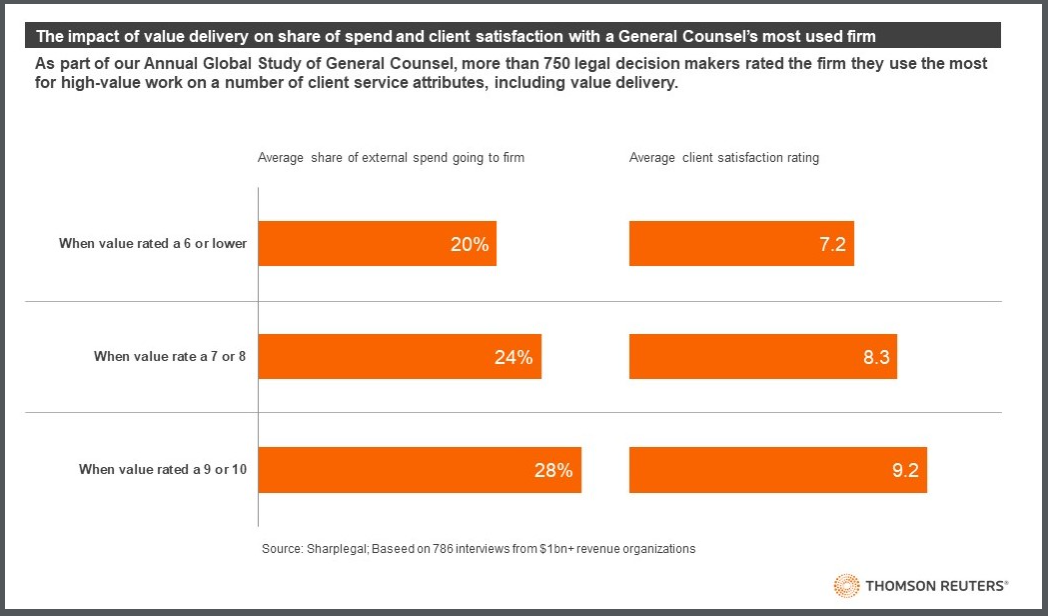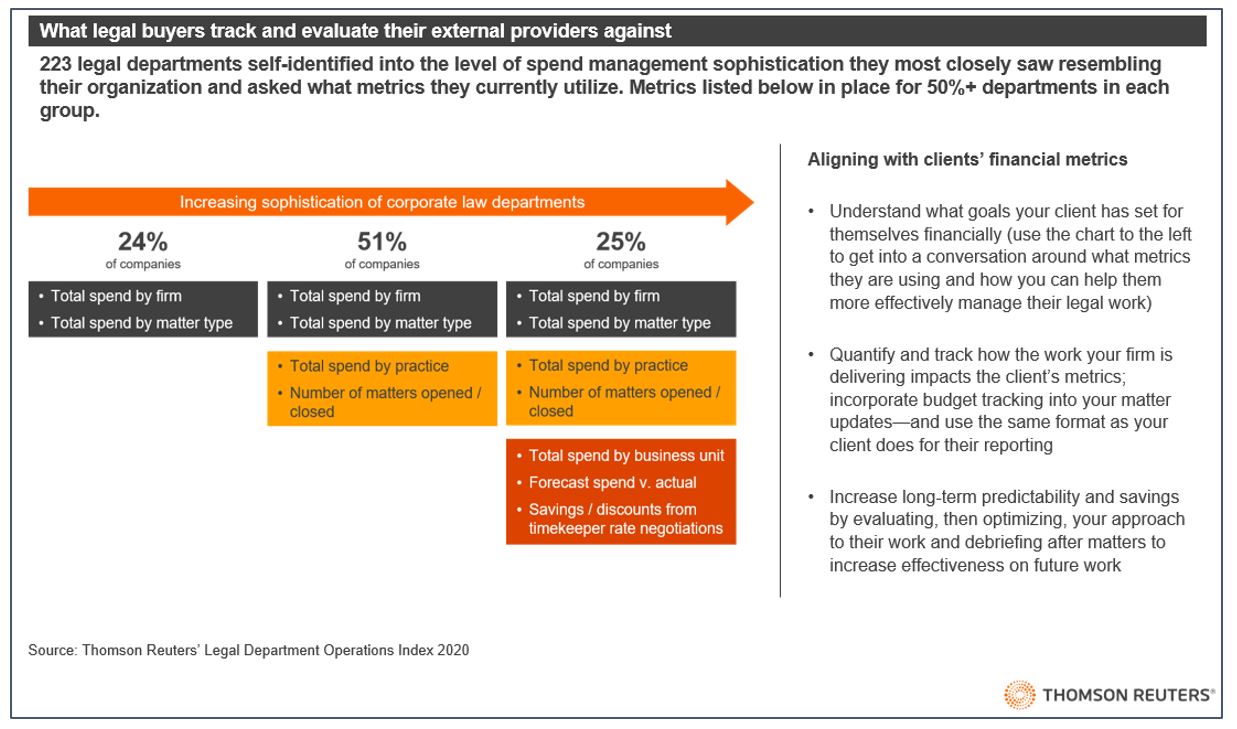The impact of delivering poor value can be devastating to your firm’s key client relationships; yet this is typically a concept intuitively understood — but not formally measured
We discovered, based on more than 750 interviews conducted with general counsel in 2020, that a client’s perceptions of the value being delivered by their outside law firm impacts more than client satisfaction — it has a noticeable effect on how much they spend.

When a general counsel rates the law firm that they use the most a 9 or 10 in value delivery, on average, they simultaneously report spending 28% of their external budget with that firm. That figure is 14% higher than when a firm is rated a 7 or 8 in value, and 35% more than when a firm is rated a 6 or lower. While the change in actual percentage points of legal spend may seem minimal, this shift can translate into an opportunity for the law firm to gather additional revenue of between $585,000 and $1.2 million a year, per client.
Perhaps more importantly is the other side of the coin. What’s not quantifiable is the potential loss of new business due to a perception of poor value on service delivery. And when general counsel tell us that they do not recommend one of the law firms they use the most, a full 40% say it is because of that firm’s poor value delivery.
Yet, law firms can help change the shape of what value-focused client relationships look like by using and tracking the same metrics as their clients do. And this is key, because general counsel are increasingly reliant on objective financial metrics to evaluate the value their own department delivers internally to other business units.
This presents a tremendous opportunity for law firms to become a true trusted partner and work to help clients meet their financial goals. Indeed, this status is a level that our research shows is typically missing from the client/law firm relationship. As one chief legal officer of a California-based technology company noted:
“I’d like to feel like there is someone managing the experience — that the bills reflect the type of work being done, and somebody was looking [at that]. I don’t have confidence that anybody is looking out for us in that way.”
Thomson Reuters’ most recent Legal Department Operations Index report, released in August, identified the metrics that many corporate law department leaders tell us they are formally tracking.

The bottom line is always going to be important to clients and their internal stakeholders. Being able to provide cost savings is almost universally appreciated, but it can quickly turn into a slippery slope for law firm profitability. This is where the wider definition of value comes into play. And, of course, rate and budget pressure from clients can reduce the opportunities for your firm to help clients quantify other measures of value, as well.
Yet, even if the opportunity is reduced, it doesn’t vanish completely, and law firms should always be prepared to identify for the client other measures of value the firm can offer, such as:
Predictability in costs — Ask yourself how accurate is your firm’s actual spend-to-budget for matters? What work can you move into a fixed fee arrangement that might better serve the client?
Cost and time efficiencies — How is your firm optimizing a process or leveraging a technology tool to save time or money? Could a different mix of staffing save your client money? Or, how can the cycle time between opening and closing a matter be shortened?
Business impact — Ask yourself whether your firm’s legal advice helped the client generate revenue, avoid risk, reduce any unexpected operational downtime, secure financing to invest in company growth, or minimize any potential reputational damage.
These financial and value metrics are how clients talk internally — more specifically, it’s how the business leaders in the top ranks within your client’s organization talk.
For a law firm, being able to address costs and value in these same terms and demonstrate value by showing your firm’s performance on these metrics is critical to making clients see your firm as better value in the long-term.
For more on staying on top of changing priorities and trends of your clients, check out Sharplegal, which develops successful strategic plans by collecting & analyzing law firms’ empirical market data.






